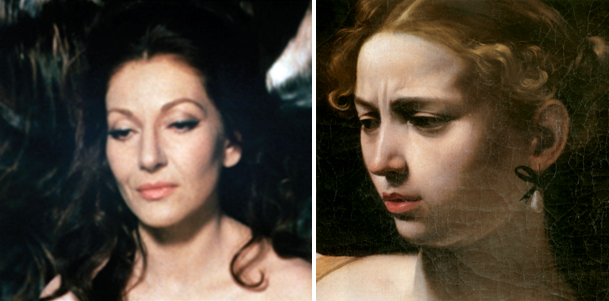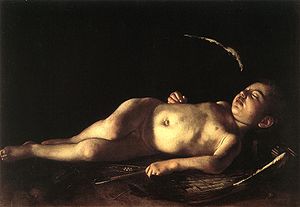Significant troublemakers of their time, Italian film director Pier Paolo Pasolini is frequently likened to Italian painter Caravaggio, both personally and professionally. Why and how are the artists so similar?
Caravaggio’s fine art is accredited with the invention of cinematic lighting – the dramatic contrast of dark and light, the minute detail of the human figure and the intimate reveal of every quirk and blemish feature in all of his pieces. His work is surely the closest we can get looking at a photograph of the 16th century. Pasolini, equally misunderstood in his lifetime because of his extreme political views, produced some of the most shocking films of the 20th century.
Revolutionary, homosexual and willing to cause a stir, the eerie likeness of their backgrounds (which both remain matters of conjecture) perhaps influenced the similarly dark, stark direction of their work, which typically oozed with as much disdain as it did provocation.
While comparisons between fine art and film can be ambiguous, the dramatic lighting both artists regularly adopted is an undeniable common denominator, as can be seen in a screenshot of Pasolini’s film Teorema (1968), left, and Caravaggio’s masterpiece Judith and Holofernes (1597 – 1600), right:
Caravaggio and Pasolini tended to enjoy the company of the outcasts of society, who they used as models for their work. Unlike his contemporaries, Caravaggio often used ‘common’ people as historic, religious, and wealthy figures, such as Sleeping Cupid (1608), in which a sleeping child is depicted as Cupid (below). Pasolini, similarly, embraced the poor and honest characters from rural Italy, often choosing to use country dialects in his films, rather than mainstream Italian language:
The techniques employed by Pasolini and Caravaggio shed light on a darker side of humanity, one that is real, graphic and well out of range of the popular culture of their times. The artists, three hundred years apart, have evidently reached a mutual understanding of the human condition.
By Category
Recent News
- 04/03/2018 - Alles, was du dir vorstellen kannst, ist real
- 04/03/2018 - Tout ce qui peut être imaginé est réel
- 04/03/2018 - Everything you can imagine is real
- 04/02/2018 - Als deutsche Soldaten in mein Atelier kamen und mir meine Bilder von Guernica ansahen, fragten sie: ‘Hast du das gemacht?’. Und ich würde sagen: ‘Nein, hast du’.
- 04/02/2018 - Quand les soldats allemands venaient dans mon studio et regardaient mes photos de Guernica, ils me demandaient: ‘As-tu fait ça?’. Et je dirais: “Non, vous l’avez fait.”


